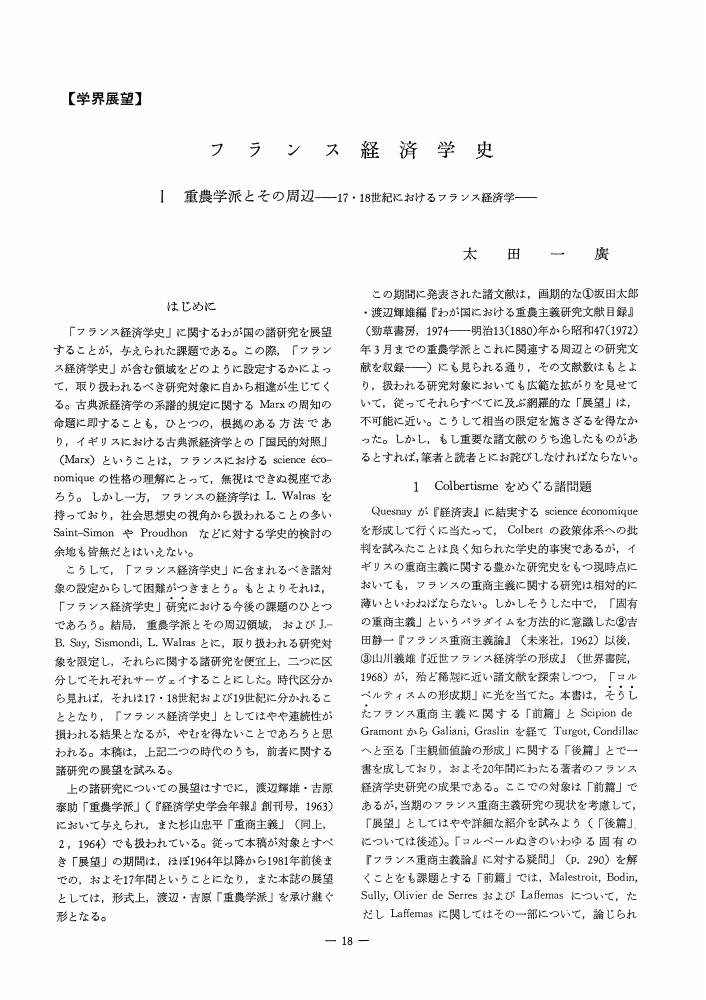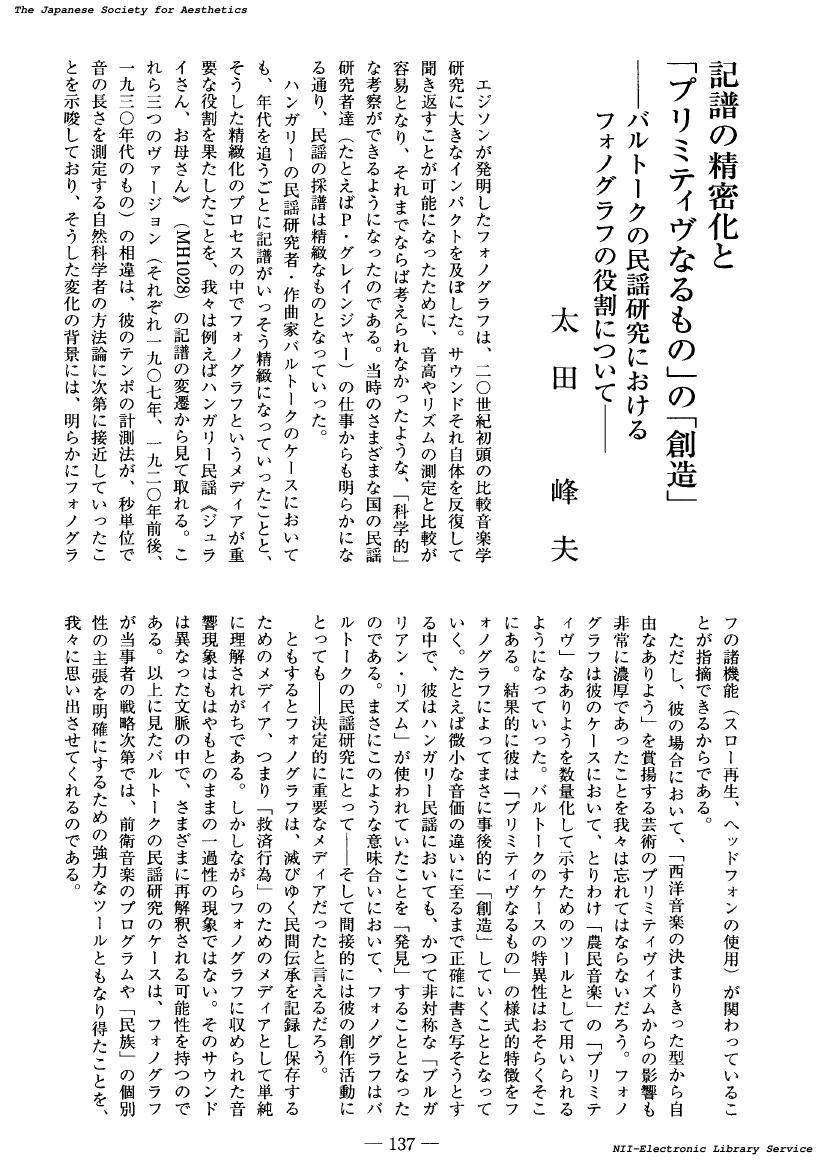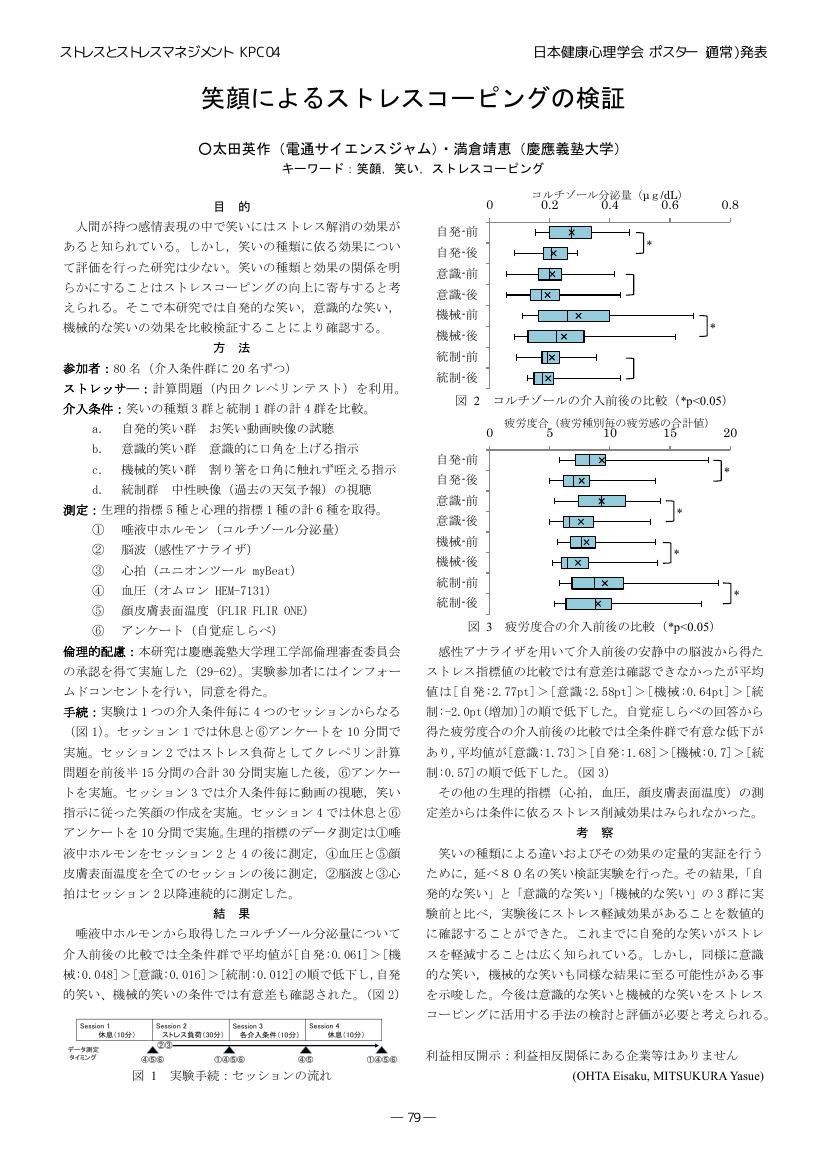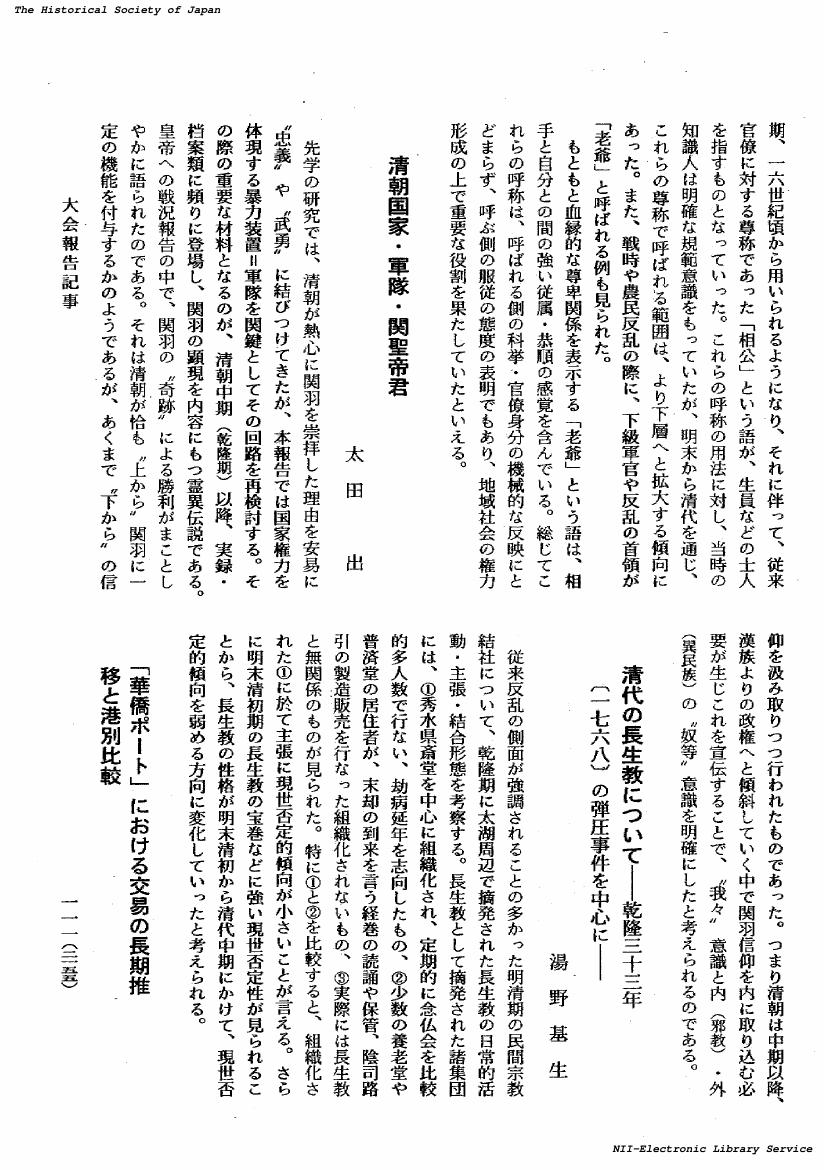1 0 0 0 OA カール・レンナーの民族的自治論
- 著者
- 太田 仁樹
- 出版者
- The Japanese Society for the History of Economic Thought
- 雑誌
- 経済学史学会年報 (ISSN:04534786)
- 巻号頁・発行日
- vol.46, no.46, pp.17-30, 2004 (Released:2010-08-05)
- 参考文献数
- 59
The Austrian national theory is understood with the names of Karl Renner and Otto Bauer. While many people realized that the existence of a nation-state cannot remove the occurence of national confrontation, much attention was lavished on their conception of personal national autonomy. However, the basis on which their concept is graunded is not fully made clear. This paper examines “the right of self-determination of nations” of Karl Renner, who advocated the policy of personal national autonomy, and intends to clarify the theoretical basis of his conception of personal national autonomy.Renner understood the nation as a personal language-culture community, and understood the state as a territorial community. Modern nationalism aims at the construction of a nation-state in which race and state correspond. This nationalism intends to unify these two social groups which are based on heterogeneous principles. Modern national problems emerge from here. In a multi-ethnic state like the ex-Austrian-Empire, the nationalists intended to build nation-states with substantial sovereignty inside of a state. Renner understood that the complicated strife between nations in Austria was thus characterized.The solution Renner raised converted Austria into a federation in which the wheels of national autonomous government and territorial autonomous government (‘twodimensional federation’) are turning. The national autonomous government is constituted by the personal principle. Free nationality-declaration of each person, registration to the nation ledger, formation of the national autonomous government as a subordinate agency of the federal government, and execution of national administration of education, welfare, and culture, these must be introduced. Renner's conception of national autonomy is based on the view of a nation as a personal community, and the view of freedom and autonomy=self-determination to be included in and secured by an upper organization or power.Renner's conception was contradictory to the fact of separation and independence of many nations after the First World War. But, the establishment of a nation-state did not bring the solution of national problems. The necessity for reexamination of Renner's conception is increasing today.
- 著者
- 太田 仁樹 池尾 愛子
- 出版者
- The Japanese Society for the History of Economic Thought
- 雑誌
- 経済学史学会年報 (ISSN:04534786)
- 巻号頁・発行日
- vol.35, no.35, pp.173-175, 1997 (Released:2010-08-05)
- 著者
- 太田 仁樹
- 出版者
- The Japanese Society for the History of Economic Thought
- 雑誌
- 経済学史学会年報 (ISSN:04534786)
- 巻号頁・発行日
- vol.34, no.34, pp.136, 1996 (Released:2010-08-05)
1 0 0 0 OA 相田愼一『カウツキー研究 -民族と分権-』, 昭和堂, 1993, x+433p.
- 著者
- 太田 仁樹
- 出版者
- 経済学史学会
- 雑誌
- 経済学史学会年報 (ISSN:04534786)
- 巻号頁・発行日
- vol.32, no.32, pp.165, 1994 (Released:2010-08-05)
- 著者
- 太田 一廣
- 出版者
- The Japanese Society for the History of Economic Thought
- 雑誌
- 経済学史学会年報 (ISSN:04534786)
- 巻号頁・発行日
- vol.22, no.22, pp.53, 1984 (Released:2010-08-05)
1 0 0 0 OA フランス経済学史
- 著者
- 太田 一廣
- 出版者
- The Japanese Society for the History of Economic Thought
- 雑誌
- 経済学史学会年報 (ISSN:04534786)
- 巻号頁・発行日
- vol.20, no.20, pp.18-26, 1982 (Released:2010-08-05)
1 0 0 0 OA フランソワ・ブーシェをめぐる批評 受容層の拡大に伴う評価基準の多様化
- 著者
- 太田 みき
- 出版者
- 美学会
- 雑誌
- 美学 (ISSN:05200962)
- 巻号頁・発行日
- vol.68, no.2, pp.160, 2017 (Released:2019-01-02)
- 著者
- 太田 純貴
- 出版者
- 美学会
- 雑誌
- 美学 (ISSN:05200962)
- 巻号頁・発行日
- vol.65, no.1, pp.148, 2014-06-30 (Released:2017-05-22)
- 著者
- 太田 智己
- 出版者
- 美学会
- 雑誌
- 美学 (ISSN:05200962)
- 巻号頁・発行日
- vol.64, no.2, pp.156, 2013-12-31 (Released:2017-05-22)
1 0 0 0 OA 日本美術史研究の「科学」化志向 : 一九三〇年代を中心に
- 著者
- 太田 智己
- 出版者
- 美学会
- 雑誌
- 美学 (ISSN:05200962)
- 巻号頁・発行日
- vol.64, no.2, pp.49-60, 2013-12-31 (Released:2017-05-22)
An emphasis on the scientific production of knowledge garnered attention in the formation of Japanese art historical scholarship in the 1930s. The present study will delineate the significance of this academic trend in the field of Japanese art history by illuminating the sociocultural background, state initiatives and private agencies involved in the process. Ultimately, it will shed light on the ways in which modern Japanese scholars attempted to situate art historical studies within the "disinterested" academic realm of human science through the rational systemization of artifacts, historical accuracy, and empirical values. Indeed, this marked a turning point in the development of art historical study in Japan distinguishing it from antiquarian and hobbyist practices of art appreciation. This paper will contribute to the ongoing historical reassessment of Japanese art historical scholarship in the first half of the twentieth century. Moreover, I will analyze not only the interdisciplinary approaches but also a Neo-Kantian scientific perspective on Japanese art history. Finally, I will show how the scientific research trend had been avidly incorporated into the academic disciplines of Japanese art history, contrary to prevalent nationalistic rhetoric of this time.
- 著者
- 太田 峰夫
- 出版者
- 美学会
- 雑誌
- 美学 (ISSN:05200962)
- 巻号頁・発行日
- vol.62, no.1, pp.121-132, 2011-06-30 (Released:2017-05-22)
In the first half of the 20^<th> century many musicologists tried to notate folk songs precisely by the help of recording media. In the case of Bela Bartok we can see that his notation of folk songs became more and more detailed as his career progressed. It is certain that the phonograph played an important role in this change in notation, even though several other factors such as the spread of "audile technique" for concentrative listening also could have been important as well. While Bartok believed that the track of record was the most authentic record of songs, he continued to use the traditional way of notation with additional signs. Consequently, aided by a phonograph with a headset, he could "discover" such unknown stylistic features as "Bulgarian rhythm" that might enlarge the vocabulary of traditional European art music. Considering his notion of "Bulgarian rhythm" as "common character of south eastern European folk music" on one hand, and the frequent appearance of "Bulgarian rhythm" with Hungarian stylistic features in his works on the other, perhaps we may say that phonograph contributed not only to his scholarly activity but also-if indirectly-to his modernist creative activity.
1 0 0 0 OA 記譜の精密化と「プリミティヴなるもの」の「創造」 : バルトークの民謡研究におけるフォノグラフの役割について(分科会IV-B[音楽のモダニズム],研究発表IV,第六十回美学会全国大会報告発表要旨)
- 著者
- 太田 峰夫
- 出版者
- 美学会
- 雑誌
- 美学 (ISSN:05200962)
- 巻号頁・発行日
- vol.60, no.2, pp.137, 2009-12-31 (Released:2017-05-22)
1 0 0 0 OA Haptiqueとは何か : 『感覚の論理』を中心としたドゥルーズの感覚論
- 著者
- 太田 純貴
- 出版者
- 美学会
- 雑誌
- 美学 (ISSN:05200962)
- 巻号頁・発行日
- vol.59, no.1, pp.29-42, 2008-06-30 (Released:2017-05-22)
In his work entitled, Francis Bacon: Logique de la sensation (1981), Gilles Deleuze develops his theory of sensation by considering works by the painter Francis Bacon. The concept of the "haptic (haptique)" plays an important role in Deleuze's analysis of Bacon's paintings. The concept derives from the word "haptic ("taktisch" or "haptisch") as discussed by Alois Riegl. Deleuze captures Riegl's idea of the haptic as opposed to the optic, and extends it in a new direction. The main purpose of my study is to clarify the difference between the ideas of Riegl and Deleuze, and to achieve better understanding of Deleuze's theory of sensation by paying special attention to the haptic. In this paper, I focus on Deleuze's definition of the haptic through examining its use in his works Mille plateaux (1980) and the above-mentioned. Then I discuss the issues of color, the action of the hand, and the "meat," three things which Deleuze saw as crucial to Bacon's technique of painting. In my view, the haptic should be understood in relation to contingency and chance.
- 著者
- 太田 純貴
- 出版者
- 美学会
- 雑誌
- 美学 (ISSN:05200962)
- 巻号頁・発行日
- vol.58, no.3, pp.140, 2007-12-31 (Released:2017-05-22)
1 0 0 0 OA アントン・マウフェのラーレン時代(第五十七回美学会全国大会発表要旨)
- 著者
- 太田 靖子
- 出版者
- 美学会
- 雑誌
- 美学 (ISSN:05200962)
- 巻号頁・発行日
- vol.57, no.3, pp.57, 2006-12-31 (Released:2017-05-22)
- 著者
- 太田 喬夫
- 出版者
- 美学会
- 雑誌
- 美学 (ISSN:05200962)
- 巻号頁・発行日
- vol.28, no.4, pp.68-72, 1978-03-30 (Released:2017-05-22)
- 著者
- 太田 喬夫
- 出版者
- 美学会
- 雑誌
- 美学 (ISSN:05200962)
- 巻号頁・発行日
- vol.26, no.1, pp.60-66, 1975-06-30 (Released:2017-05-22)
1 0 0 0 OA 笑顔によるストレスコーピングの検証
- 著者
- 太田 英作 満倉 靖恵
- 出版者
- 一般社団法人 日本健康心理学会
- 雑誌
- 日本健康心理学会大会発表論文集 31 (ISSN:21898812)
- 巻号頁・発行日
- pp.P79, 2018 (Released:2018-08-14)
1 0 0 0 OA 清朝国家・軍隊・関聖帝君
- 著者
- 太田 出
- 出版者
- 公益財団法人 史学会
- 雑誌
- 史学雑誌 (ISSN:00182478)
- 巻号頁・発行日
- vol.107, no.12, pp.2155, 1998-12-20 (Released:2017-11-30)















